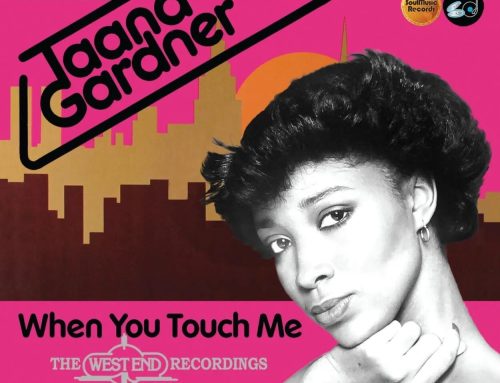Its soundtrack debuted at number 11, would go on to top Billboard for 24 consecutive weeks, and spend a total of 122 weeks on the charts. It spawned several smash singles, including “When Doves Cry,” “Let’s Go Crazy,” and the titular track. Most people with a weak grasp of American pop culture are faintly aware of these statistics. Still, outside of the fact that it is no longer exclusive to those who purchased 2017’s Purple Rain’s Deluxe (Expanded) Edition set and now widely available on streaming platforms beyond YouTube as a 2020 COVID relief effort, what’s new about this re-re-release? One answer is the podcast.
Even the most cynical commentator cannot deny the fresh insight The Prince Estate’s masterful audio documentaries developed alongside The Current has provided fans. Aired intermittently since 2019 alongside each major album rollout to drum up anticipation for its release, these series have successfully done that and more. Host Andrea Swennson has stewarded fans through five different works, totalling 20 episodes.
An initial four for 1999. 2 for One Nite Alone. A sprawling 8 for what many consider Prince’s magnum opus, Sign O’ The Times, which earned two Webby Awards for Arts & Culture Podcast and also nominated in the category of Music Podcasts. Another four for Welcome 2 America, his first full unreleased album. And, finally, two for Prince and The Revolution: Live.
Though brief, this pair of episodes details the significance of the Purple Rain film, album, and tour. Swennson makes space for the retrospection of The Revolution members and various tour personnel. Their anecdotes add a certain candor to their recollection of preparation for the album that they precede. Bobby Z’s candid statement, “I didn’t think it was gonna do that well”, startlingly conflicts with its almost immediate success. Nonetheless, the stakes were raised, and the group disciplined itself accordingly.
BrownMark stated, “The way we rehearsed building up to it was actually like doing a concert every night. I knew Purple Rain. I could fall asleep and probably play it.” Swennson went so far as to suggest they exceeded the requisite 10,000 hours in order to attain mastery of any craft. BrownMark corroborated, adding that the band might jam on a single section of a song alone for an hour at a time.
I was doing the 75th Purple Rain show, doing the same thing over and over for the same kids who go to Spice Girls shows, and I just lost it. I said I can’t do it. I knew I had to get away from all that. I couldn’t play the game.
By the time Prince and The Revolution arrived in Syracuse, members of the group described themselves as a well-oiled machine, fine-tuned, and a freight train. After attaining a number one film, album, and single in the nation–a feat yet unmatched–Prince became restless. Having pushed the proverbial envelope off of the table and onto the floor, he decided it was time to move on and refused to continue into other territories as part of a world tour. A historic decision made as a commercial compromise for this decision resulted in a first-of-its-kind live satellite broadcast across Europe.
This is all validated and challenged when one considers the show’s structure. Following audience cheers and synth chords, the opening words communicate the gravitas of the moment: “Hello Syracuse, and the world.” Though the first song played is the first track on Purple Rain and one of Prince’s biggest songs, “Let’s Go Crazy,” the first half of the set list curiously features only one other song from the titular album, “Take Me With U.”
People’s perception of me changed after that, and it pigeonholed me. I saw kids coming to concerts who screamed just because that’s where the audience screamed in the movie. That’s why I did Around the World in a Day, to totally change that. I wanted not to be pigeonholed.
It must to be noted that the sterling audio quality shines through this jam as a brief respite from the band’s careen through its catalog. This audio’s remastering allows for a perfect communication of the concert’s grandeur, as well as a flawless transmittal across time and space of the fervor contained within Syracuse’s Carrier Dome. This continues into the latter half of the album as the band delves into Purple Rain; a segue aptly marked by a détente with the Creator.
Philosophical bifurcation characterizes the remaining portion of the show, starting with God, Purple Rain’s B-side. Here, Prince begins the work of expanding each track to the extent that their spiritual dimensions cannot be overlooked. “What’s the difference between life and death,” he inquires before bellowing, “God!” The concert’s set list from this point on corresponds with the album’s track list as the Spirit creeps forth.
My original draft of ‘Let’s Go Crazy’ was much different from the version that wound up being released. As I wrote it, ‘Let’s Go Crazy’ was about God and the deelevation of sin. But the problem was that religion as a subject is taboo in pop music. People think that the records they release have got to be hip, but what I need to do is to tell the truth.
The Revolution’s talents brilliantly shine as we venture into the eye of the purple storm. Wendy Melvoin shreds on Computer Blue before a conflict between love and lust is engendered as this piece transitions into “Darling Nikki.” She and Lisa admonish, “They both have four letters, but they’re entirely different words.” Nikki crescendos with Bobby Z’s mastery of the LM-1 drums on full display, and the song ends with the apocalyptically fixated chant which helped rationalize the creation of parental advisory labels when back-masked: “Hello, how are you?/Fine, fine, ’cause I know that the Lord is coming soon/Coming, coming soon.”
A most majestically refreshing performance of “The Beautiful Ones” incorporates heart-wrenching pleading which firmly places Prince in the same league as Otis Redding and Teddy Pendergrass. An initially airy and almost haunting “When Doves Cry” makes itself present and accounted for as guitar growls begin to swell towards its midpoint and Dr. Fink’s synth solo shrieks. Lyrically, tension continues as generational trauma manifests itself in the narrator’s relationship. “I Would Die 4 U” serves as a praise and worship unlike any other; “Alright, once for the Man above! He can hear us!” BrownMark’s bass slapping pulsates through “Baby I’m a Star” more powerfully than at any previous point in the show. Not to mention Eric Leeds’ appearance, which foreshadowed changes in the band prior to its dissolution.
Purple Rain served as my entry point into Prince’s nearly four decade long career. It is inarguably his most concise and accessible project. The studio album, already explosive, becomes bombastic when given the stadium-shaking touch in Prince and The Revolution: Live. Still, the third issue of this work compels one commentator to wonder, Why? Of the 11 posthumous album releases, one includes material from the 1990s. None touch on his work in the 1970s, with the exception of two demos, namely “I Feel For You” and “Do Me, Baby.” Of the podcast episodes, 70 percent focus on the 1980s, almost a third on the first half of the decade alone.
All artists should own their masters, he said, especially [B]lack artists. He saw it as a way to fight racism. Black communities would restore wealth by amassing their master recordings. And they would protect that wealth, hiring their own police, founding their own schools, and forming bonds on their own terms.
There is so much yet untouched! Is it not possible for The Prince Estate to grow and maintain his legacy in a financially responsible manner while also breaking new ground? Why is there hardly a mention of his incomplete memoir, The Beautiful Ones, on its site? What would be the implications of discussing his proto-Black nationalism which echoes that of Harold Cruse? Have his various proteges refused to discuss their relationship with him on record? What of his explicitly stated desire to be placed in the canon of Black music? Each of these points presents troves of work that can expand his legacy and that of others.
Prince and The Revolution: Live serves as a crowning achievement of the era for Prince and music more broadly. It also serves as a testament to his and the band’s impact on a crowd at the height of their popularity and cohesion as a unit, while interpolating spiritual complexity. Further, this digitally remastered body of work provides crisp and clear audio for its listeners from the pounding beat to jolting solos across this almost two hour marathon. The vault, now open, holds decades worth of work to be excavated. This familiar touchstone proves a worthy offering. Hopefully, something new will come in time.
Alex Horton, SoulMusic.com Editorial Contributor






